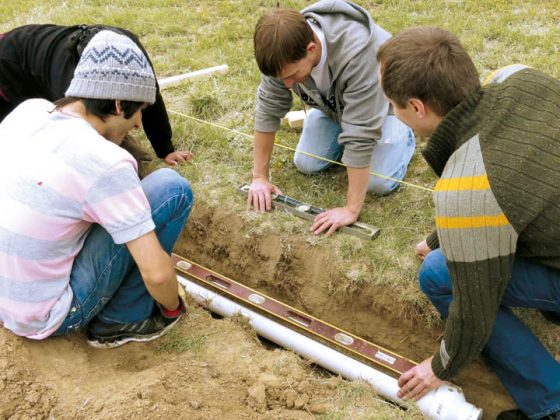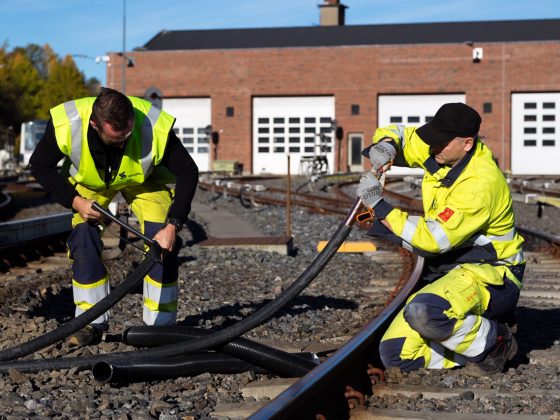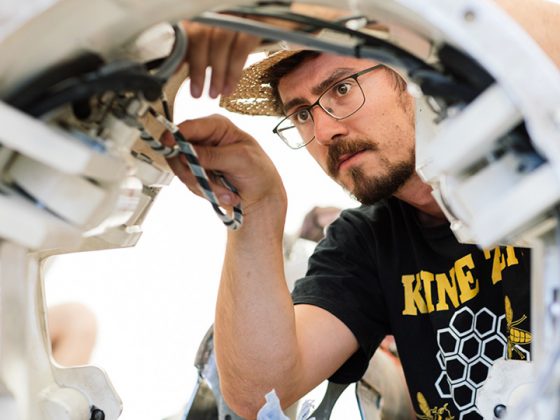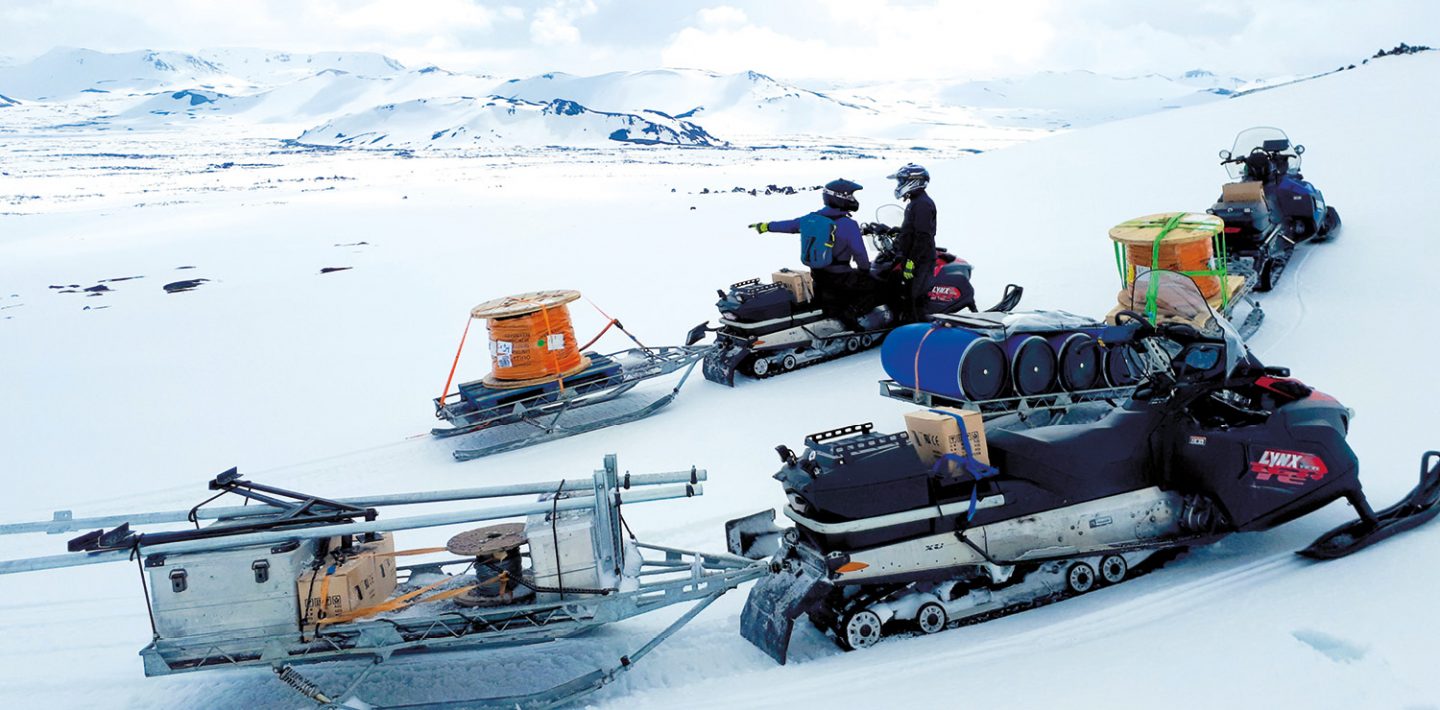
(© Icelandic Meteorological Office)
Volcanoes are just as much a part of Iceland as geysers, elves and trolls. One of the most active and dangerous of these is Hekla, located in the south of the island. It erupts approximately every ten years, most recently in 1970, 1980, 1991 and 2000, spewing fountains of ash up to 30 kilometres into the sky. But since the last eruption in 2000, the volcano appears to have been on a break. This is good news for tourists, who have come in their droves to hike to the crater rim 1491 metres above sea level. But geophysicists are nervous. “Hekla could erupt at any minute”, warns Martin Möllhoff, “and the longer this quiet period goes on, the more violent the eruption could be”. The German physicist works at the School of Cosmic Physics of the Institute for Advanced Studies in Dublin, Ireland. Here, he leads the technical division that uses seismometers to monitor countless volcanoes around the world, including Hekla. If these probes detect minor tremors in the ground, it is red alert. This is because the last eruptions were only detected in seismic measurement curves around 30 to 80 minutes in advance. As a result, all visitors to Hekla must download an app to their smartphone that receives warning messages via SMS.
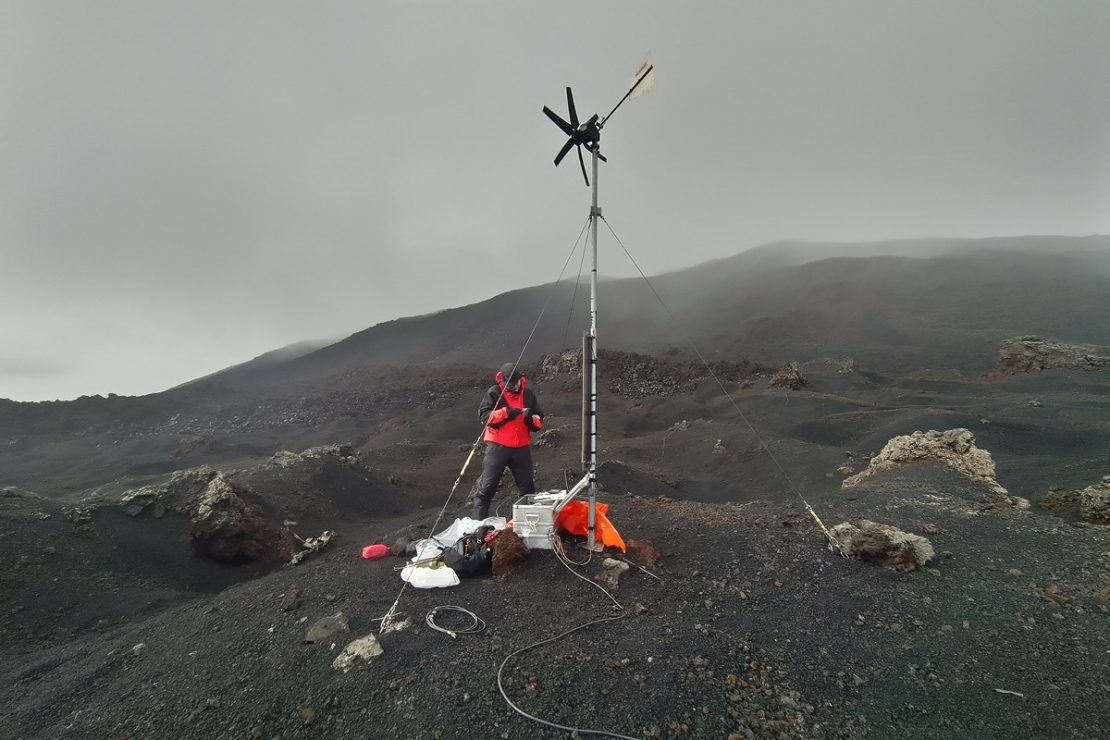
(© Dr David Craig, DIAS, Dublin Inst. For Advanced Studies)
Detecting the warning signs
Möllhoff’s team is currently installing six seismometers on the volcano. Each of these metal cylinders contains a mass made from a thermally stable metal alloy. This is kept virtually motionless by means of an electronic feedback loop. Tremors in the ground cause the housing to vibrate, while the mass does not follow the motion due to its inertia. The position of the mass relative to the housing is measured and the feedback loop executes a magnetic or electrostatic counterforce, depending on the model. The voltage required to generate this force is the measurement value that is digitally recorded. This makes it possible to detect movements of just a few nanometres (1 nanometre = 1 millionth of a millimetre).
As Hekla offers so little warning time, it is not possible to save the measurement values in the seismometer and take readings on site every few months as usual. Instead, they must be communicated immediately. This usually occurs via 3G mobile phone modem, but is not possible for all seismometers as the 3G modem requires up to five watts of electrical current. In the gloomy Icelandic landscape, where the sun only rises for a few hours a day if at all in winter, solar cells cannot provide enough energy. That is why Möllhoff’s team decided to use a cable from LAPP to transfer the data. This cable also transfers the energy required to run the seismometers, which is generated by three small wind turbines.
The cable was supplied by Johan Rönning, the market leader for electrical equipment in Iceland. Johan Rönning imports and sells LAPP products in Iceland, and supplies electrical components to most geophysical installations. The company has been working with LAPP since 1985.
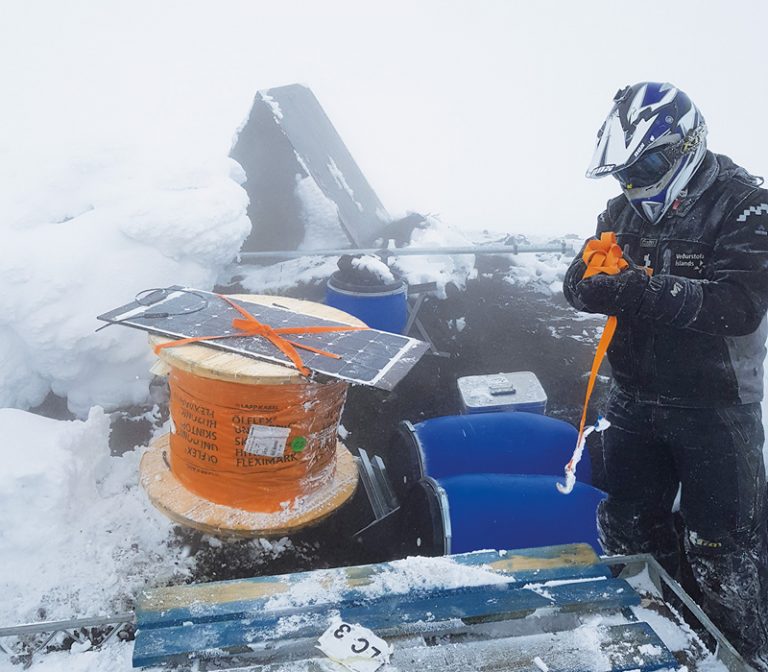
(© Icelandic Meteorological Office)

(© Martin Möllhoff, Director of DIAS, Dublin Inst. for Advanced Studies)
Across razor-sharp volcanic rock
In many sectors, LAPP is known for not having minimum order quantities. This allowed the scientists to order the three kilometres of cable they needed for their entire installation. But the main argument in favour of the LAPP cable was its robustness. The hard volcanic stone makes it impossible to install a cable underground, meaning it has to be rolled out over razor-sharp rocks. It must therefore withstand both mechanical abrasion and the freezing-cold temperatures of the Icelandic winter. Furthermore, highly corrosive gases flow out of the ground at some places.
The job of selecting the right cable fell to Bergur Bergsson. The engineer from Iceland’s meteorological office went looking for a Vaseline-filled Ethernet cable with four twisted-pair cores, screening and a robust outer sheath. He opted for an outdoor cable for telecommunication connections. The cable features four twisted pairs, surrounded by an aluminium-coated plastic band that acts as screening. The PE outer sheath resists UV light and is transversely waterproof, meaning that it does not allow moisture to penetrate through the sheath. If water penetrates at the ends of the cable, in this case at the connections to the seismometer and the modem in the data centre, or through a tear caused by a sharp object, the water is prevented from spreading through the cable. This is because the cable is filled with petroleum jelly, commonly known as Vaseline.
Möllhoff thinks the choice of cable is a very good one. The 60-volt direct current power supply to the seismometers is stable, as is the data transmission in both directions via separate wire pairs. This allows the volcanologists to adjust the seismometer settings from afar. The measuring system works perfectly, with the first seismometer collecting 1.5 gigabytes of data per month and transmitting it live to Reykjavik and Dublin.

